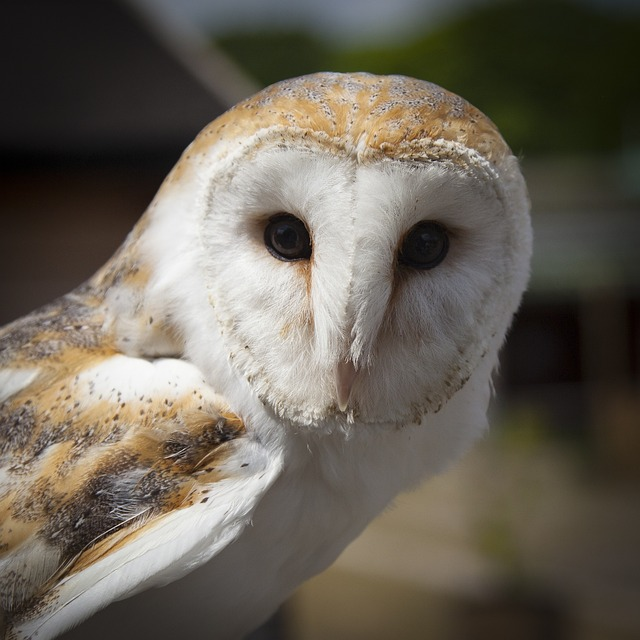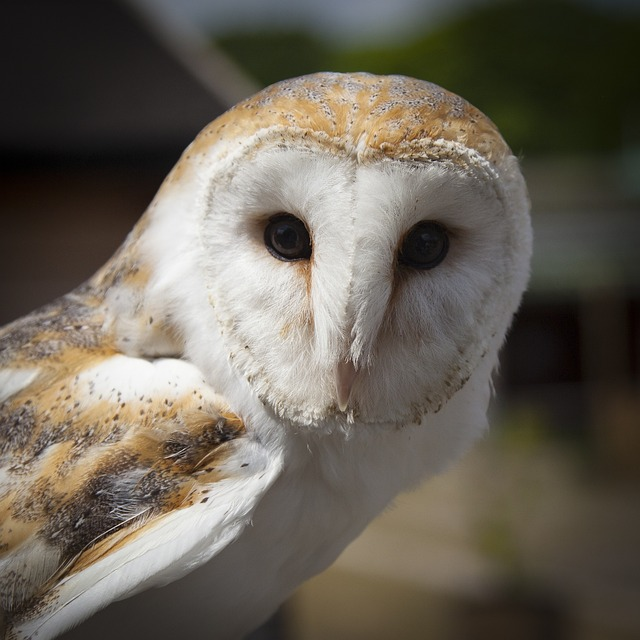Barn owls (Tyto Alba) are among the most iconic bird species you’ll ever get to know. They are also among the most widespread. Large barn owl populations can be found in various regions of South America, Central America, Western Europe, and Southeast Asia. Known to be birds of prey, barn owls are not the most ideal pets in comparison to other birds.
Of course, there are also many other different types of owls. But what exactly is it that makes barn owls so different from other owls? Here are some facts you need to know about this bird species.
Table of Contents
Characteristics Of A Barn Owl
Physical Features
Barn owls are most distinguished by their heart-shaped face. They have long wings, a square tail, and a pale-colored complexion. Its scientific name “Tyto alba” can be literally translated as “white owl”.

Furthermore, a barn owl is a medium-sized raptor. If what you’re looking for is a pet, this is not the bird for you. We have written a separate article about the best birds to have as pets.
Like most birds of prey, barn owls have excellent vision and can see well even in complete darkness. Aside from this, barn owls also have more sensitive hearing compared to other species of birds. Most birds can hear sounds from 1-4 kHz, but the hearing of barn owls range from 5-9 kHz. Barn owls hunt better with these natural characteristics.
When a barn owl is in flight, you’ll recognize its undulating form with its feet dangling in the air. Its legs are feathered as well as the ridge above the beak.
Behavior Ecology
Hunting
Because of their excellent vision and strong auditory senses, barn owls prefer to go hunting from midnight until twilight. Their broad and long wings allow them to dive easily to the ground and capture prey while flying low.
Barn owls particularly like to prey on rodent pests and other small mammals. Occasionally, they also prey on other birds smaller than them. Because of this, many farmers find their presence highly valuable. To encourage barn owl populations in agricultural fields, farmers will even go so far as to build nesting sites for them.
Breeding Season
In most cases, a barn owl will only have one brood or two broods per year, but they can have up to three broods when the climate is warmer. The breeding itself usually takes place during the wet season while the egg-laying occurs in the dry season.
Barn owls are loyal creatures and are known to mate with only one partner for life unless the said partner dies. The male feeds the female and executes a display fight during the time of courtship.
Once a barn owl lays its first egg, the female begins the incubation immediately. After all, females tend to do all the incubation on their own, lasting for about 29-34 days. The female feeds the young hatch, but the male is the one who hunts for food supply. Female barn owls hunt, too, at least after the first two weeks of the young hatch. After some time, the barn owl chicks will also need to learn how to hunt on their own.
Common Diet For Barn Owls
When studying what foods make up the diet of an owl, a scientist has to take its regurgitated pellets as samples. These are the undigested parts of their food that they chew and cough up through their beak. The American Ornithologists Union is one of the top organizations committed to supporting such scientists and their studies in the natural sciences.
So what is the common diet of barn owls? This generally consists of mostly small mammals, reptiles, amphibians, and insects. Voles, which are small mouse-like rodents that destroy crops, are one of their most common food supplies.
Some bird caretakers also like to feed barn owls with freeze-dried insects, many of which can be purchased from Amazon.
Fluker’s Freeze Dried Grasshoppers
Fluker’s Freeze-Dried Grasshoppers are inexpensive feeds for barn owls, and they will especially benefit farmers who like to keep these birds coming into their croplands. It is packed with protein and other essential nutrients, making it a convenient feed to prepare for visiting owls without having to deal with the hassle of preparing live prey items.
Find out more about this item or purchase it immediately from Amazon.
Fluker’s Gourmet-Style Crickets
If you want a more gourmet option for your barn owl visitors, then this product from Fluker’s will seal the deal. It contains 17.9% of protein and is ideal for a low-fat diet, which is what ornithologists would recommend for barn owls.
Find out more about this item or purchase it immediately from Amazon.
While these food products are great for the occasional feeding of barn owls, these are, in fact, not enough to sustain them, especially adult barn owls. Moreover, hunting is an essential part of their lifestyle, and barn owls are generally self-reliant creatures.
Habitat For Nesting Barn Owls
Even though you can see a barn owl almost anywhere at almost anytime, it is quite picky when it comes to finding a place to build as their nesting sites. It should be somewhere dark and secluded, even if the space is small. It should also be close to where their food sources abound.
Hollowed Spaces
Barn owls build nests almost anywhere they can find hollow spaces. Hollow spaces mostly have just the right amount of darkness needed by these nocturnal birds. Specifically, you’ll find barn owls nesting on:
- hollow trees or tree cavities
- cliff ledges
- barn lofts
- church steeples
- old buildings
Barn owls in general find holes in trees and other similar structures particularly cozy, and you’ll find them creating more of these hollow spaces in open habitats such as grasslands, river banks, and agricultural fields in areas like Southern Canada and Central Mexico.
Nest Boxes
A nest box is a man-made shelter intentionally made to be a nest site for birds. It’s a helpful thing to have for farmers who like to invite barn owls into their land. One of the first things to get right when building one is the size, and then you need to hang it somewhere with just the right elevation.
For adult barn owls, the size should be at least 18 inches high, 18 inches wide, and 36 inches deep. You can read another article from The Furry Pet to know more information about barn owl nest boxes.
Easy Assemble Cedar Owl Box
This easy-to-assemble owl box is a size bigger than common nest boxes. Hand-made by natural cedar wood, it has a durable and waterproof design. Moreover, it features wildlife-friendly materials, so there’s no need to worry about it harming your barn owl friends.
Wrapping Up
Now that you know a lot of facts about barn owls, you will now be able to distinguish them better compared to other owls. You can also appreciate the great service they provide to the ecosystem and to the livelihood of many agricultural workers. They might not be the most ideal pets, but there’s no reason not to consider them as friends.
Frequently Asked Questions
1. Can you keep barn owls as pets?
Barn owls are not the most ideal pets. They are birds of prey and must be allowed to hunt in order to thrive. Domesticating them as pets is against their nature and will only inhibit their growth and development.
2. What attracts barn owls to your backyard?
If you live in a grassy area or cropland where rodents or other small mammals show up all the time, barn owls will likely be attracted to your yard. It makes it easy for them to locate prey.
3. What are the predators of barn owls?
Because barn owls are themselves birds of prey, they have very few predators. Occasionally, they may get taken by snakes, stoats, and great horned owls.




